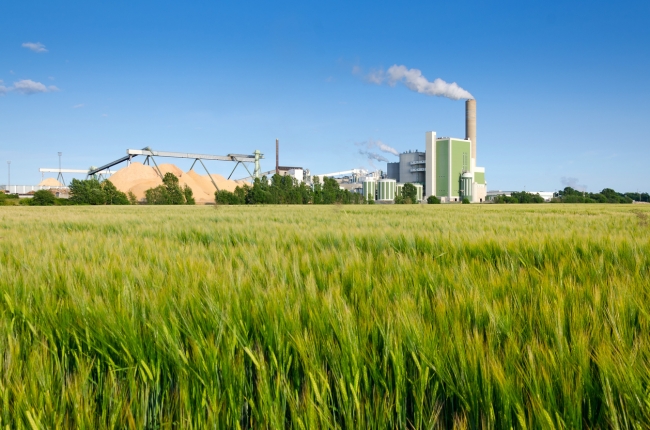5 minute read • published in partnership with ABGI
Insight: The results of innovation in manufacturing and boosting business growth – part 4
At a time when businesses across the UK are grappling with unprecedented challenges, access to funding to increase cashflow and help mitigate the disruption has become a top priority. There is no doubt that British companies which have been involved in R&D and those which turn out to be hugely successful are linked. In this series of articles, we share with you case studies and practical examples of manufacturing businesses that were able to claim funding on projects aimed at improving products for market by making them cheaper, faster, smaller, larger or more efficient. In the fourth of a series of articles, ABGI looks at how innovation and R&D in the manufacturing sector can ‘make things greener’.
Part 4 – Making things greener
Next in our series on the aspects of innovation that may be eligible for tax relief, we turn our attention to business activities focused on R&D to “make things greener.”
Now, more than ever before, it is obvious that we all have a part to play in reducing the environmental impact of our activities. There is considerable pressure on every company to be a bit “greener.” But sometimes, companies efforts can feel disingenuous, much like companies attitudes to “Total Quality Management” used to be in the nineties. Being greener will mean different things to different people, but nonetheless, every individual in every company now has an imperative to work toward minimising their environmental impact.

ABGI is encouraging manufacturers to look at R&D opportunities that could help boost business growth and support a sustainability strategy / Picture: Getty/iStock
Green opportunities
Some measures have more obvious positive environmental impact than others, such as reducing energy consumption, reducing water consumption or water waste, however, they all present their own particular challenges and opportunities. As well as creating a marketing opportunity for the business (e.g. improving a company’s environmental credentials over its competitors’) there is an opportunity to reduce its tax exposure, by claiming R&D tax relief against the money spent in addressing and resolving those very challenges.
Green Case Studies
1 – Reducing energy consumption is one of the most significant challenges for most manufacturers, and if successful represents a double win: the company sees 1) a direct reduction on operating costs and 2) a reduction in its environmental impact. One such example is an ice-cream manufacturer which was able to reduce its energy usage by 200% through redesigning its manufacturing processes; integrating new more efficient plant with existing equipment. Another example is a brewery, intent on reducing its use of harmful chemicals, while at the same time eliminating the need for energy intensive pasteurisation. By experimenting with filtration media, temperatures and the use of centrifuge, the brewery was able to develop a more natural filtration process, reducing the release of potentially harmful waste into the water stream and maintaining the clarity of their beers.
2 – An increasing number of companies are now turning their attentions to reducing recycling and at the same time reducing waste going to landfill. The construction industry is working hard to shake off its reputation for being one of the worst environmental polluters. One resourceful cement company for example, invested time and effort in finding an effective method of binding potential contaminants into industrial fly ash (the ash from industrial incinerators) allowing it to use the ash as a constituent part in cement. Another example is a cement manufacturer collaborating with a waste recycling company to find a way to remove chlorine from waste plastic, in order to create plastic granules that could be used as a fuel in cement kilns.
3 – As a result of media and government highlighting the issue of our oceans “drowning in plastic”, many UK businesses are nowworking hard towards reducing their reliance on plastic. Many people are turning their attention to using biodegradable plastics or plastic substitutes from natural sources. One such company worked to exploit the structural strength of cellulose (the substance that make up plant cell walls) to produce a biodegradable plastic cup that can contain boiling water without leaking. The structural qualities of cellulose are vital in binding paper but unfortunately, the recycling processes reduce the binding capability, making it difficult to produce good quality paper using only recycled raw material. To try and overcome this challenge, one company explored non-hazardous chemical binders, allowing them to produce the first white coated paper made from 100% recycled paper. In order to achieve the bright white finish that we have come to expect they also had to experiment with pigment ratios.
4 – The recycling industry itself is investing significantly in developing new ways to reduce the amount of waste going to landfill. Investment in optimising the sorting and dismantling processes have allowed the industry to substantially increase the proportion of aluminium being recycled without additional aluminium supplements during the smelting process.
5 – The move away from using CFCs created a number of challenges for refrigeration companies. While the obvious replacement was CO2 as it requires significantly less power to cool, it does need to be contained at a higher pressure to make it an effective coolant, which makes it much more unstable and prone to explode. However, extensive R&D into the development of more accurate feedback and control systems, has improved the safety aspects of using CO2 in refrigeration units while reducing energy costs and environmental impact.
The great news is that much of the development necessary to reduce UK businesses’ impact on the environment is likely to qualify for significant R&D tax relief, which can help offset the costs of “making things greener”. In some instances, it may also provide patentable intellectual property and potential Patent Box relief throughout the commercialisation of the technology. Not every industrial advance has to cost the earth, but some can certainly produce tax gold dust!
